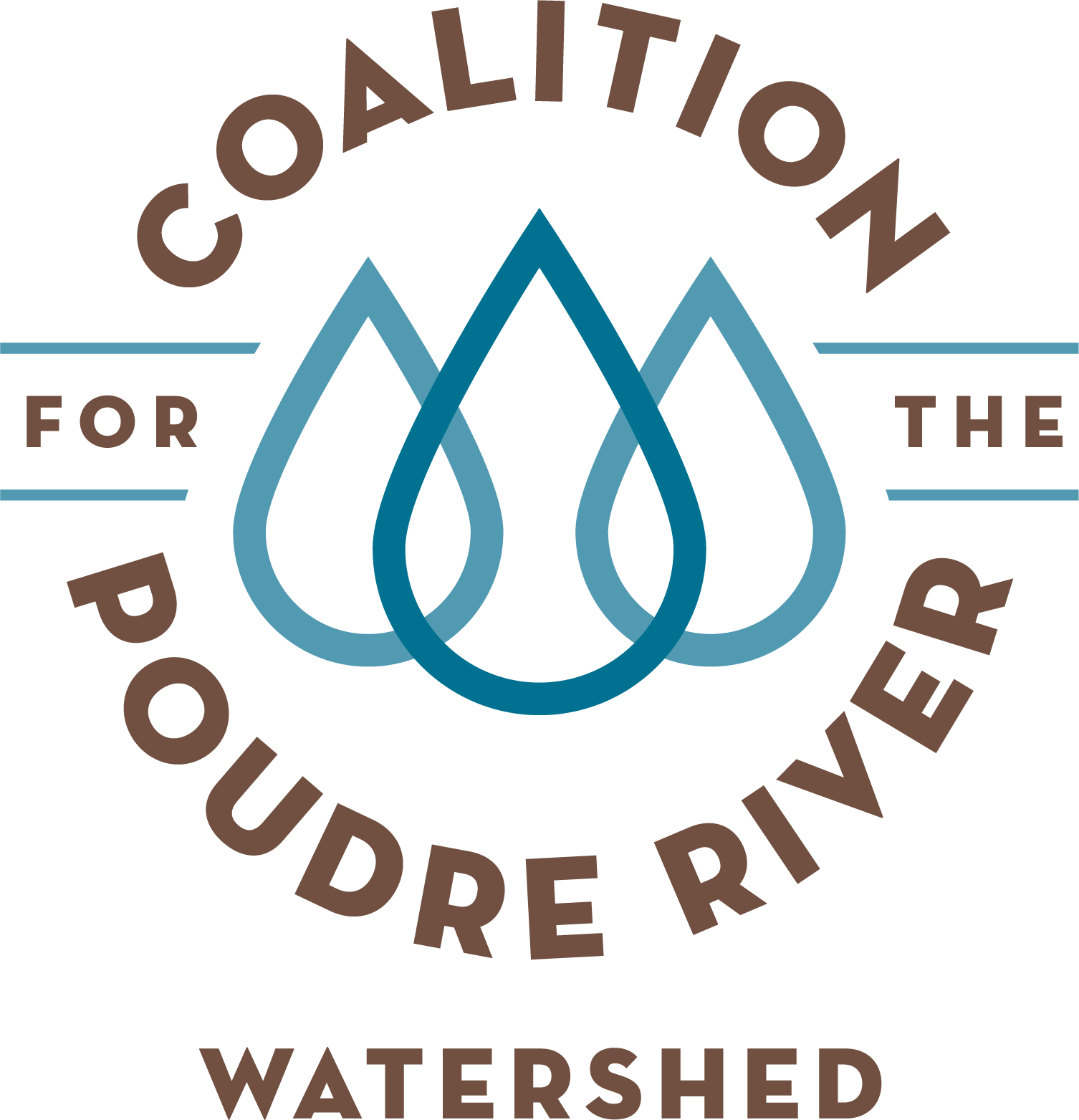Cameron Peak Post-Fire Impacts – Debris Flow, Flooding & Water Quality
A “black water” event on the Poudre River in late June of 2021 after heavy rain fell on the Cameron Peak burn scar.
High intensity wildfires, such as the Cameron Peak Fire of 2020, have a predictable suite of impacts that negatively affect watershed processes. Generally, these altered watershed processes lead to excess sediment and nutrients being delivered to receiving waters from burn scars. Over 1,000 mi of river (596 mi in the Poudre, 427 mi in the Big Thompson), are in the Cameron Peak burn perimeter, putting multiple river-related values at significant risk.
Debris flows, flash flooding, washed out roads and a black Poudre River has been a common scene of late. Recent heavy rain events over the Cameron Peak burn scar flushed soot, ash and charred tree debris into the river and its many tributaries. These black water events can be a disruption to water providers, motorists, private landowners and recreationists.
Debris flow dangers
Debris flows (commonly called mud slides, mud flows or debris avalanches), according to the Colorado Geologic Survey, “are shallow landslides, saturated with water, that travel rapidly downslope as muddy slurries. The flowing mud carries rocks, trees, and other debris as it pours down the slopes.”
“When an environment is damaged from wildfire, even relatively short high-intensity rainstorms may trigger debris flows. They are typically generated when hillside soil, rock, or landslide material becomes rapidly saturated with water and flows into a channel. Intense rainfall, rapid snowmelt, or high levels of groundwater flowing through fractured bedrock can trigger these events. Debris flows and floods may also occur when precipitation on slopes causes extensive hillside erosion and channel scour.” (Colorado Geologic Survey, 2021)
Debris flows can pose hazards that are often times overlooked. Houses, roads, and other structures in the path of a debris flow may be severely damaged or demolished. Roads can become impassable or wash out completely. We have already seen this happen in areas of the Cameron Peak burn scar, causing damage to property and dangerous driving conditions. [Insert debris flow graphic]
Be Flood Aware
Flooding is common within burn scars. We recommend that all landowners affected by the Cameron Peak Fire, who live in the floodway, or who plan to travel and recreate in these areas sign up for NOCOAlert. You can receive flood alerts texted directly to your phone by texting FLOOD2021 to 888777. You can also sign up for all emergency alerts by visiting https://nocoalert.org/. The National Weather Service is also an excellent resource for information about flooding within burn scars. For flash flood warnings, radar, and up-to-date weather on the Front Range visit: https://www.weather.gov/bou/
Post-fire water quality impacts and monitoring
The risk of flooding and erosion increase greatly after a wildfire and can have both short- and long-term impacts on water supplies, such as increased treatment costs, need for alternative supplies, and diminished reservoir capacity.
According to the U.S. Geolgical Survey (USGS), “The degree to which wildfire degrades water quality and supply depends on multiple factors. These include the extent and intensity of the wildfire, post-wildfire precipitation, watershed topography, and local ecology.”
In April, City of Fort Collins Utilities staff installed water quality monitoring instruments at two locations upstream of the Poudre supply intake facility. The Poudre at Indian Meadows site is located one mile downstream of the Town of Rustic and the Manners Bridge site is located approximately one mile upstream of the City’s raw water intake. This monitoring system provides water treatment operations near real-time water quality data to quickly respond to changes in Poudre River water quality that result from runoff from the Cameron Peak burn area or other upstream events.
“Both sites have already proven to be valuable in detecting post-fire impacts from the Cameron Peak Fire during snowmelt runoff.”
The Upper Cache la Poudre (UCLP) Watershed Collaborative Monitoring Program was established in 2008 between the City of Fort Collins, the City of Greeley and Soldier Canyon Water Authority, to help meet present and future drinking water treatment goals.
Water quality monitoring of the city’s raw, Cache la Poudre River drinking water supply is conducted from April through November. Monitoring sites are strategically located throughout the UCLP. Water quality data provide valuable information about the health of our source watershed and raw water supply, especially after large wildfires like the Cameron Peak Fire of 2020.



